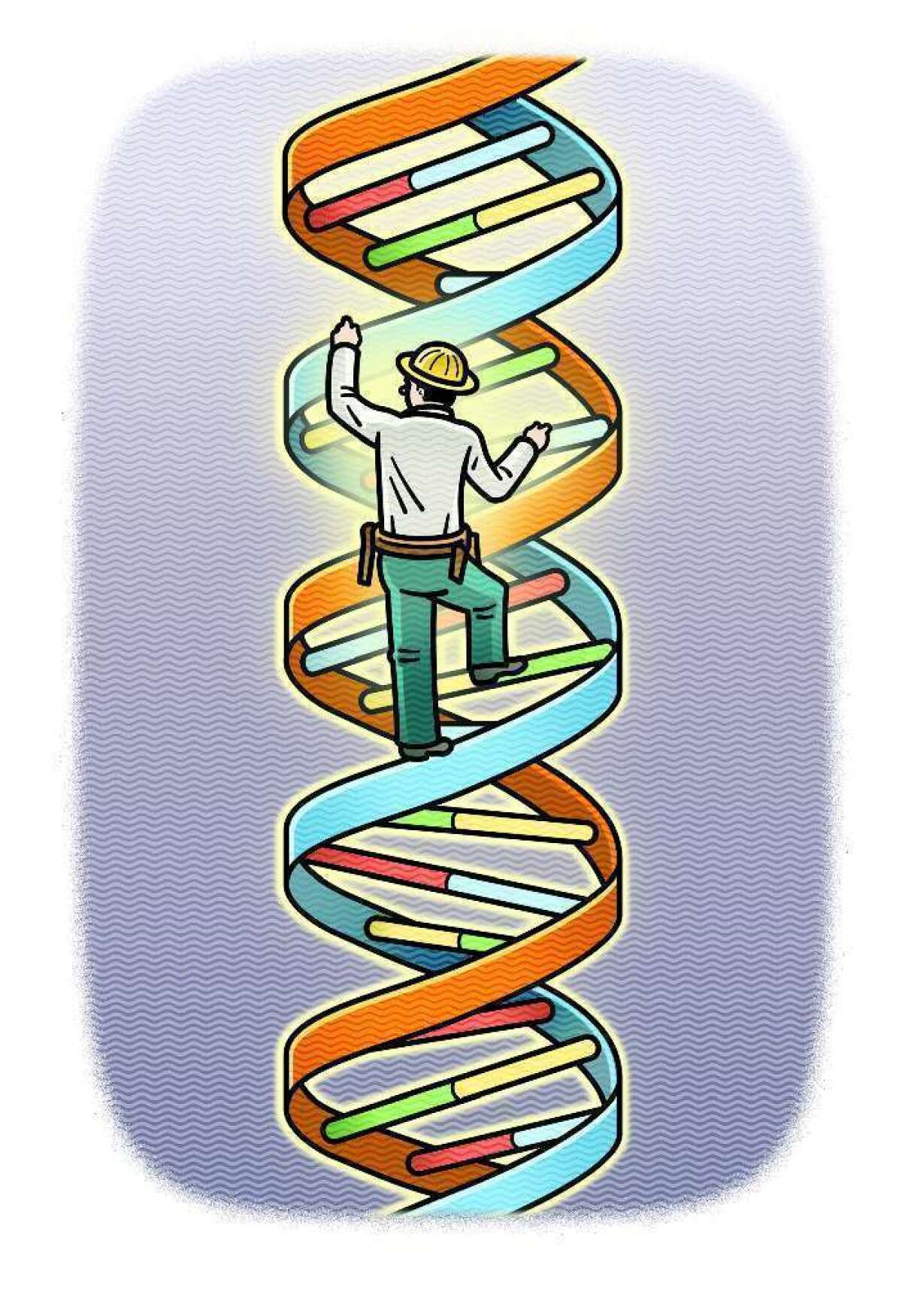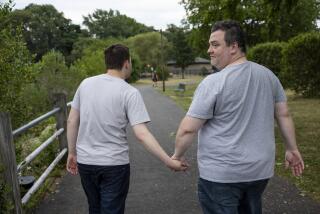Gene therapy using HIV helps children with fatal diseases, study says

- Share via
Italian researchers have used a defanged version of HIV to replace faulty genes — and eliminate devastating symptoms — in children suffering two rare and fatal genetic diseases.
Improved gene therapy techniques prevented the onset of metachromatic leukodystrophy in three young children and halted the progression of Wiskott-Aldrich syndrome in three others.
The advance represents a major stride for a field that has struggled to translate experimental successes in lab animals into safe and effective treatments for people, experts said. Researchers may be able to use the team’s method as a template, modifying it to treat a variety of diseases.
This is “ammunition for the gene therapy world,” said Dr. Theodore Friedmann, a pediatric gene therapist at UC San Diego, who was not part of the study. “The field is slowly but surely making impressive advances against … quite untreatable diseases.”
The scientists published results from the two clinical trials Thursday in the journal Science.
Metachromatic leukodystrophy affects just 1 in 40,000 to 1 in 160,000 people worldwide; Wiskott-Aldrich syndrome, only 1 to 10 per million males. But both illnesses are devastating. Children with late infantile metachromatic leukodystrophy, the most common form of that disease, begin having trouble walking about a year old and soon after experience muscle deterioration, developmental delays, paralysis and dementia. Most die within a few years of onset.
Kids with Wiskott-Aldrich syndrome suffer from eczema, bruising, nosebleeds and recurrent infections. Most develop at least one autoimmune disorder. A third get cancers, such as lymphoma and leukemia. Life expectancy ranges from 15 to 20 years.
The disorders are challenging — when not impossible — to treat. No therapy exists for metachromatic leukodystrophy. A bone marrow transplant can stop disease progression for the few Wiskott-Aldrich patients with an immunologically matched sibling, but they may experience severe side effects or death if the donor is not as close a match.
Both diseases are caused by inherited genetic mutations that disrupt the body’s ability to produce crucial enzymes. In each trial, researchers took the normal form of the faulty gene and attached it to a virus derived from HIV that had been modified so that it could no longer cause AIDS.
The researchers removed bone marrow stem cells from the patients and then used the lentivirus to infect those cells with the normal genes.
The rest of the process resembled a traditional bone marrow transplant, with patients receiving chemotherapy to destroy their diseased bone marrow and then receiving infusions of the modified cells, which proliferated to form new marrow. Using the patients’ own cells sidesteps problems of donor incompatibility.
The team treated the three metachromatic leukodystrophy patients before symptoms of the disorder had appeared. The kids stayed almost entirely symptom-free during the trial, up to two years after treatment. Gene therapy arrested the progression of disease in the Wiskott-Aldrich syndrome patients over up to two and a half years of follow-up.
Looking at the patients’ bone marrow stem cells, the researchers found that 45% to 80% of the transplanted cells in the metachromatic leukodystrophy trial and 25% to 50% in the Wiskott-Aldrich trial produced the desired proteins, and continued to do so throughout roughly two years of follow-up.
That marked a major leap from a 2009 trial that used a similar approach to treat adrenoleukodystrophy, another degenerative disease. In that study, 15% of cells made the normal enzyme over the same time period.
Dr. Luigi Naldini, a scientist at the San Raffaele Telethon Institute for Gene Therapy in Milan, Italy, who helped lead the trials, said his team fine-tuned the viral delivery method that had been pioneered in the 2009 study. Using the HIV-derived lentivirus was safer than relying on the mouse retroviruses tested in earlier gene therapy trials, because lentiviruses are less likely to activate cancer-causing genes near the target gene on a chromosome.
Naldini and his colleagues optimized the lentiviral techniques further, lessening cancer risk by tracking each modified stem cell — and its daughter cells — over time, and figuring out ways to grow purer, more concentrated lentivirus and to introduce the desired genes into cells more efficiently.
The group also fine-tuned their ability to wipe out enough resident bone marrow stem cells to make room for the modified cells, but not enough to have toxic effects.
Dr. Jennifer Puck, a pediatrician at UC San Francisco who was not involved in the research, praised the Italian team for getting such good results, even while incorporating safety modifications that tend to make such therapies less effective.
She cautioned, though, that the findings were still preliminary and that knowing whether the patients would remain free of immune deficiencies, cancer or neurological defects would take more than just a few years of follow-up.
Dr. Donald Kohn, a pediatric gene therapist at UCLA, who also wasn’t involved in the study, said researchers may be able to use the team’s method of delivering an HIV-packaged gene through patients’ bone marrow stem cells as a template for treating a variety of diseases.
Besides about 50 other blood cell genetic disorders, such as sickle cell anemia, the therapy may also be adapted to AIDS, leukemia and other diseases involving the blood and immune cells that arise from bone marrow stem cells, he said.






